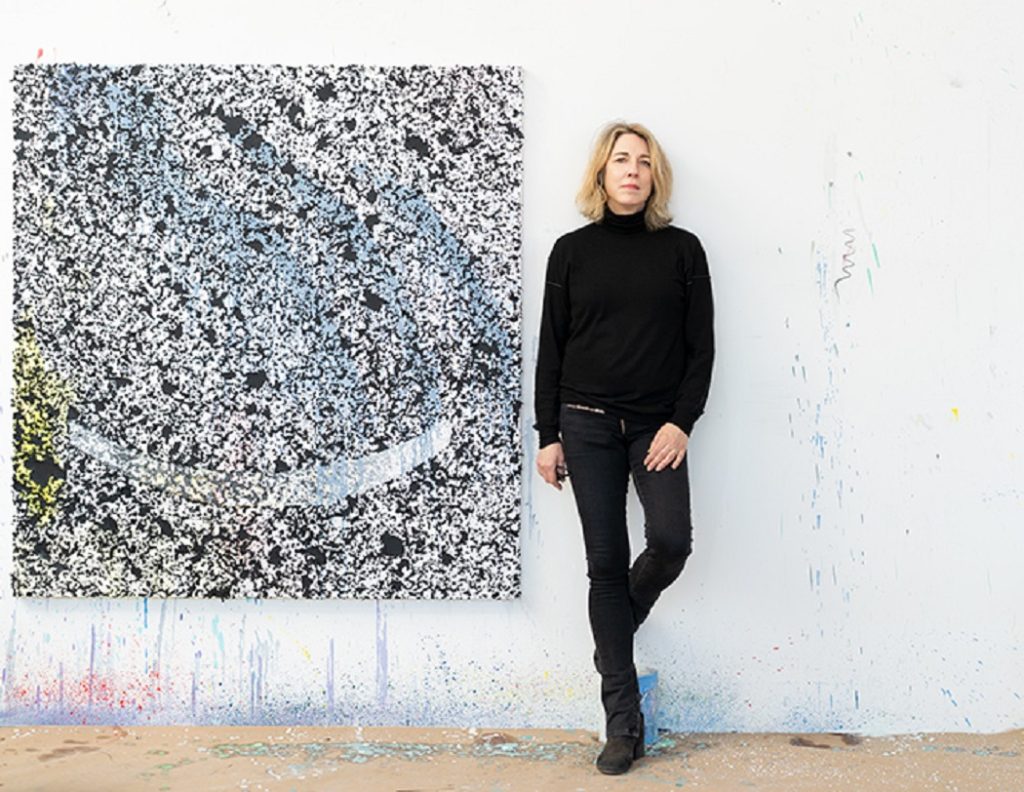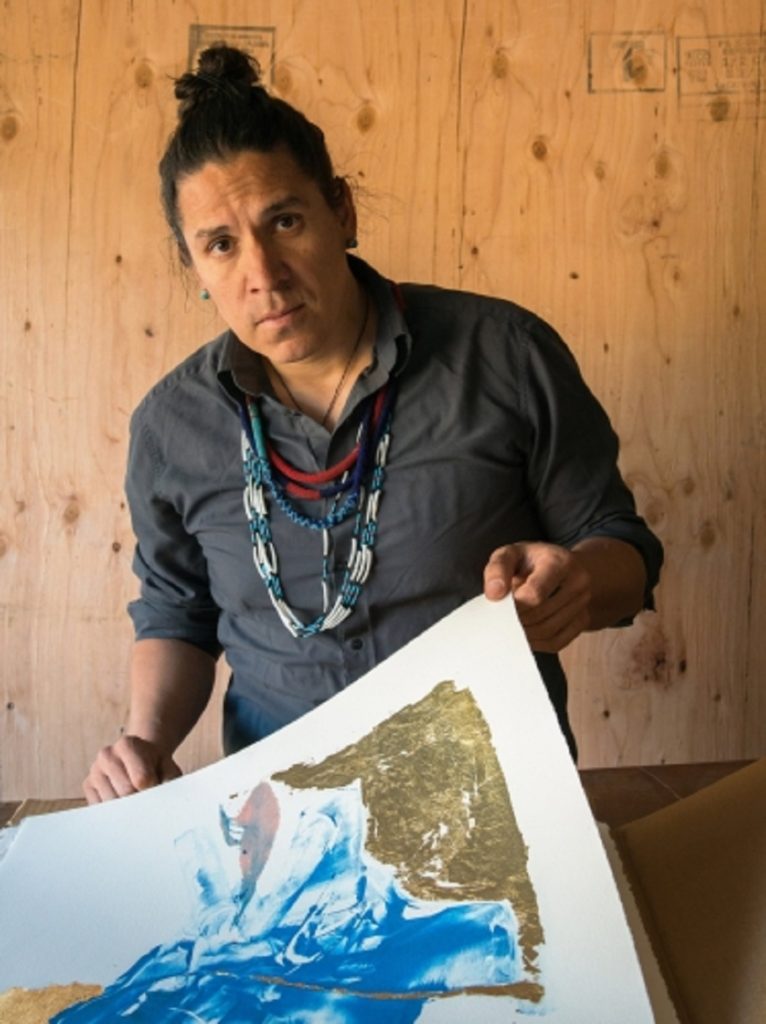Galanin is constantly shifting in modalities, mediums, and aesthetics, allowing the conceptual reality of a work to dictate its physical manifestation. In his 2017 work White Noise, American Prayer Rug, a monumentally sized textile, lying flat on a low plinth, appears to levitate. The imagery of the rug calls to mind “snow,” or the white static that appears on a television when its transmission is lost. Those discombobulating rhythmic patterns that swirl across a screen reference no logical imagery, figurative narrative, or person; it is a picture of nothing and everything. White noise is a repeating frequency of sound meant to eliminate ancillary noise. In choosing this title, the artist is not providing an answer, but is creating a proposition of white noise and “whiteness” in an immediate and American context. Galanin unpacks genocidal histories of America, a “whiteness-noise” that has attempted to obliterate or drown out the voices of Indigenous bodies. The paradoxical nature of the work, being a rug made for prayer and ceremony, yet being of a design that distracts and muffles sound, creates a conundrum of meaning and functionality.
from Erin Joyce “Dear Listener: Nicholas Galanin’s Auratic Response to 500 Years of Occupation”, in “Nicholas Galanin: Let Them Enter Dancing and Showing Their Faces” (Minor Matter Books, 2018.
Mark Godfrey: As we move into one of the final spaces, we see something else that you’re doing in this exhibition that you haven’t done before, which is to project a kind of animated light show onto a painting. The painting, Untitled (2021), derives from a stencil depicting TV interference, and the light projection on top of it is also based on interference patterns. Can you talk about the evolution of this new idea? We’ve already discussed the black light paintings that generate their own light, but projecting onto a painting is a new thing.
Jacqueline Humphries: I’m working with white noise patterns in this work, which harks back to the idea of the painting as a light source. I thought, why not use the motifs within the painting as the actual lighting to exhibit the painting? White noise is like TV static – it moves. So the canvas is animated to create a narrative of the paining lighting itself.
– from A Guided Walkthrough of jHΩ1:) – Jacqueline Humphries and Mark Godfrey, from the interpretive guide to the exhibition “Jacqueline Humphries: jHΩ1:), Wexner Center for the Arts, 2021

